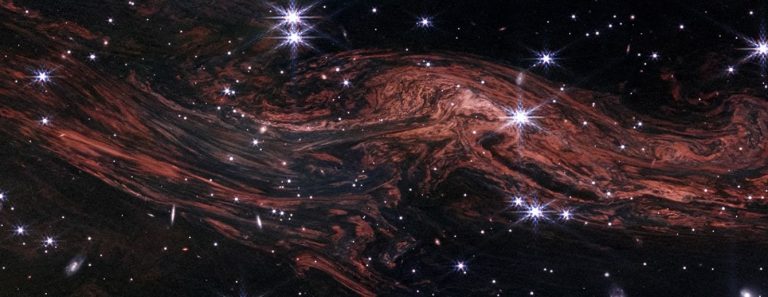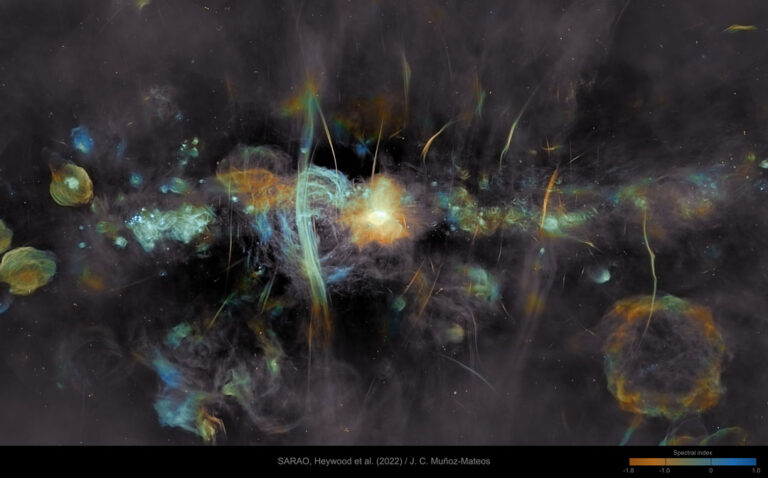NASA的韦伯望远镜揭示星际尘埃和气体的复杂层次
很久很久以前,一颗大质量恒星的内核发生坍塌,产生的冲击波向外喷发,将恒星撕成碎片。当冲击波到达恒星表面时,它穿透了恒星表面,产生了短暂而强烈的X射线和紫外线脉冲,向周围的太空传播。大约350年后,这个光脉冲到达了星际物质,照亮了星际物质,令其升温,并发出红外光。

很久很久以前,一颗大质量恒星的内核发生坍塌,产生的冲击波向外喷发,将恒星撕成碎片。当冲击波到达恒星表面时,它穿透了恒星表面,产生了短暂而强烈的X射线和紫外线脉冲,向周围的太空传播。大约350年后,这个光脉冲到达了星际物质,照亮了星际物质,令其升温,并发出红外光。

2022年2月2日 The Galactic Center in Radio from MeerKAT Image Credit: Ian Heywood (Oxford U.), SARAO; Color Processing: Juan Carlos Munoz-Mateos (ESO) Explanation: What’s happening at the center of our galaxy? It’s hard to tell with optical telescopes since visible light is blocked by intervening interstellar dust. In other bands of light, though, such as radio, the galactic center can be imaged and shows itself to be quite an interesting and active place. The featured picture shows the latest image of our Milky Way’s center by the MeerKAT array of 64 radio dishes in South Africa. Spanning four times the angular size of the Moon (2 degrees), the image is impressively vast, deep, and detailed. Many known sources are shown in clear detail, including many with…